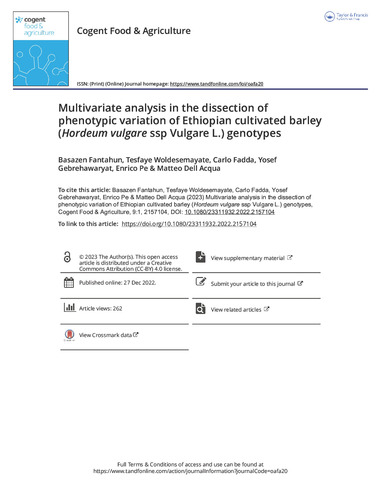Multivariate analysis in the dissection of phenotypic variation of Ethiopian cultivated barley (Hordeum vulgare ssp Vulgare L.) genotypes
Efficient conservation and subsequent utilization of genetic resources are primarily dependent on the strength in the assessment of variation among genotypes. An experiment was carried out aiming at determining the extent of phenotypic variability present in a panel of 320 barley genotypes and identifying candidate lines for further evaluation in improvement programs and successive utilization. It was conducted at two locations in Ethiopia, Aris Negelle and Holetta in the 2017/18 and 2018/19 cropping seasons. Among the best 30 lines for grain yield across all the environments, lines from farmers’ varieties constitute 73% and lines that mature in less than 85 days were identified. Based on the spike row number, the best-performing lines combined across all the environments were six-rowed types. Based on the two years’ data at Arsi Negelle the two-rowed spike type dominates, and at Holetta the six-rowed type. After principal component analysis, the first three PCs with an eigenvalue greater than one explained 70% of the variation. The correlation coefficient between grain and biomass yield was significant and though low (r = 0.38***). Significant, high, and negative correlation coefficient (−0.72***) was observed between 1000 kernel weight and the number of seeds per spike. A positive correlation between biomass and grain yield attracts farmers as a feed and food crop as it has also been signified in the current research. Having the improved barley gene pool largely from international sources, combining the improved materials with farmers’ varieties may minimize the existing gap between the local and improved barley gene pool.

